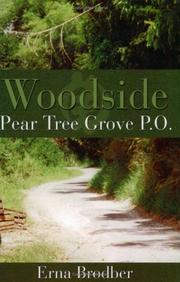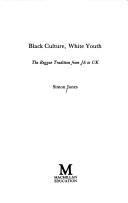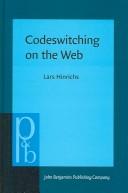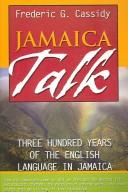| Listing 1 - 5 of 5 |
Sort by
|

ISBN: 1435611292 9781435611290 9766401527 9789766401528 Year: 2004 Publisher: Kingston, Jamaica [Great Britain] University of the West Indies Press
Abstract | Keywords | Export | Availability | Bookmark
 Loading...
Loading...Choose an application
- Reference Manager
- EndNote
- RefWorks (Direct export to RefWorks)
WOODSIDE (JAMAÏQUE) --- VILLAGES --- PAYSANNERIE --- BLANCS --- CONDITIONS SOCIALES --- JAMAÏQUE --- ST MARY --- WOODSIDE

ISBN: 0333452542 0333452550 9780333452554 Year: 1988 Publisher: Basingstoke : Macmillan Education,
Abstract | Keywords | Export | Availability | Bookmark
 Loading...
Loading...Choose an application
- Reference Manager
- EndNote
- RefWorks (Direct export to RefWorks)
Youth --- Popular culture --- Reggae music --- Blacks --- Jeunesse --- Culture populaire --- Reggae --- Noirs --- History --- History and criticism --- Histoire --- Jamaïque --- Histoire et critique --- Great Britain --- Grande-Bretagne --- Ethnic relations --- Relations interethniques --- Jamaïque --- Black people

ISBN: 1282155423 9786612155420 9027293309 9789027293305 9789027253903 9027253900 Year: 2006 Publisher: Amsterdam Philadelphia, PA J. Benjamins Pub.
Abstract | Keywords | Export | Availability | Bookmark
 Loading...
Loading...Choose an application
- Reference Manager
- EndNote
- RefWorks (Direct export to RefWorks)
Based on a corpus of private email from Jamaican university students, this study explores the discourse functions of Jamaican Creole in computer-mediated communication. From this participant-centered perspective, it contributes to the longstanding theoretical debates in creole studies about the creole continuum. The book will likewise be useful to students of computer-mediated communication, the use and development of non-standardized languages, language ecology, and codeswitching. The central methodological issue in this study is codeswitching in written language, a neglected area of study at the moment since most literature in codeswitching research is based on spoken data. The three analytical chapters present the data in a critical discussion of established and more recent theoretical approaches to codeswitching. Fields that will benefit from this book include interactional sociolinguistics, creole studies, English as a world language, computer-mediated discourse analysis, and linguistic anthropology.
Code switching (Linguistics) --- Creole dialects, English --- English language --- Electronic mail messages. --- Germanic languages --- English Creole languages --- Negro-English dialects --- Language shift --- Switching (Linguistics) --- Bilingualism --- Linguistics --- Diglossia (Linguistics) --- E-mail correspondence --- E-mail messages --- Email correspondence --- Email messages --- Telematics --- Social aspects --- Electronic mail messages --- Computer architecture. Operating systems --- Pragmatics --- Sociolinguistics --- Creolan languages --- Script switching (Linguistics) --- CHANGEMENT DE CODE (LINGUISTIQUE) --- LANGUES CREOLES (ANGLAISES) --- ANGLAIS (LANGUE) --- COURRIELS --- JAMAIQUE --- ASPECT SOCIAL

ISBN: 1435694996 9766401705 9781435694996 9789766401702 Year: 2007 Publisher: Kingston, Jamaica University of the West Indies Press
Abstract | Keywords | Export | Availability | Bookmark
 Loading...
Loading...Choose an application
- Reference Manager
- EndNote
- RefWorks (Direct export to RefWorks)
First published in 1961, Jamaica Talk is a thorough study of the English spoken in Jamaica and, although intended for the general educated reader rather than the linguistic specialist, has a foundation of sound scholarship.
English language --- Creole dialects, English --- Provincialisms --- Dialects --- English Creole languages --- Negro-English dialects --- Germanic languages --- Language and languages. --- Foreign languages --- Languages --- Anthropology --- Communication --- Ethnology --- Information theory --- Meaning (Psychology) --- Philology --- Linguistics --- Language and languages --- Jamaica --- Jamaïque --- G'amaiḳah --- Xaymaca --- Jamaika (Country) --- Ямайкэ --- I︠A︡maĭkė --- جامايكا --- Jāmāyikā --- Chamaica --- J·amayica --- Xamaica --- Xamayka --- Yamayka --- Ямайка --- I︠A︡maĭka --- Yamaika --- Jamajka --- Джамайка --- Dzhamaĭka --- Tschameeki --- Jaméíkʼa --- Τζαμάικα --- Tzamaika --- ジャマイカ --- West Indies (Federation) --- Languages. --- Anglais (langue) --- Langues créoles (anglaises) --- Régionalismes --- Jamaïque --- Dialectes
Book
ISBN: 9780300211009 0300211007 9780300214352 0300214359 9780300264364 Year: 2016 Publisher: New Haven
Abstract | Keywords | Export | Availability | Bookmark
 Loading...
Loading...Choose an application
- Reference Manager
- EndNote
- RefWorks (Direct export to RefWorks)
"Through Creole houses and merchant stores to sugar fields and boiling houses, Jamaica played a leading role in the formation of both the early modern Atlantic world and the British Empire. Architecture and Empire in Jamaica offers the first scholarly analysis of Jamaican architecture in the long 18th century, spanning roughly from the Port Royal earthquake of 1692 to Emancipation in 1838. In this richly illustrated study, which includes hundreds of the author's own photographs and drawings, Louis P. Nelson examines surviving buildings and archival records to write a social history of architecture. Nelson begins with an overview of the architecture of the West African slave trade then moves to chapters framed around types of buildings and landscapes, including the Jamaican plantation landscape and fortified houses to the architecture of free blacks. He concludes with a consideration of Jamaican architecture in Britain. By connecting the architecture of the Caribbean first to West Africa and then to Britain, Nelson traces the flow of capital and makes explicit the material, economic, and political networks around the Atlantic"--From publisher's website.
Architecture and society --- Architecture --- History --- Jamaica --- History. --- Architecture, Western (Western countries) --- Building design --- Buildings --- Construction --- Western architecture (Western countries) --- Art --- Building --- Design and construction --- Architecture and society. --- Architecture. --- Jamaica. --- Architecture and sociology --- Society and architecture --- Sociology and architecture --- Social aspects --- Human factors --- Chamaica --- Dzhamaĭka --- G'amaiḳah --- I͡Amaĭka --- I͡Amaĭk --- Jamaika --- Jamaïque --- Jamajka --- J·amayica --- Jāmāyik --- Jaméíkʼa --- Tschameeki --- Tzamaika --- Xamaica --- Xamayka --- Xaymaca --- Yamaika --- Yamayka --- West Indies --- Architecture, Primitive --- Enslaved persons --- Social conditions. --- Dwellings --- Slaves --- Architecture et société --- Esclaves --- Histoire --- Conditions sociales --- Habitations --- Aspect social --- Jamaïque --- Social aspects.
| Listing 1 - 5 of 5 |
Sort by
|

 Search
Search Feedback
Feedback About UniCat
About UniCat  Help
Help News
News